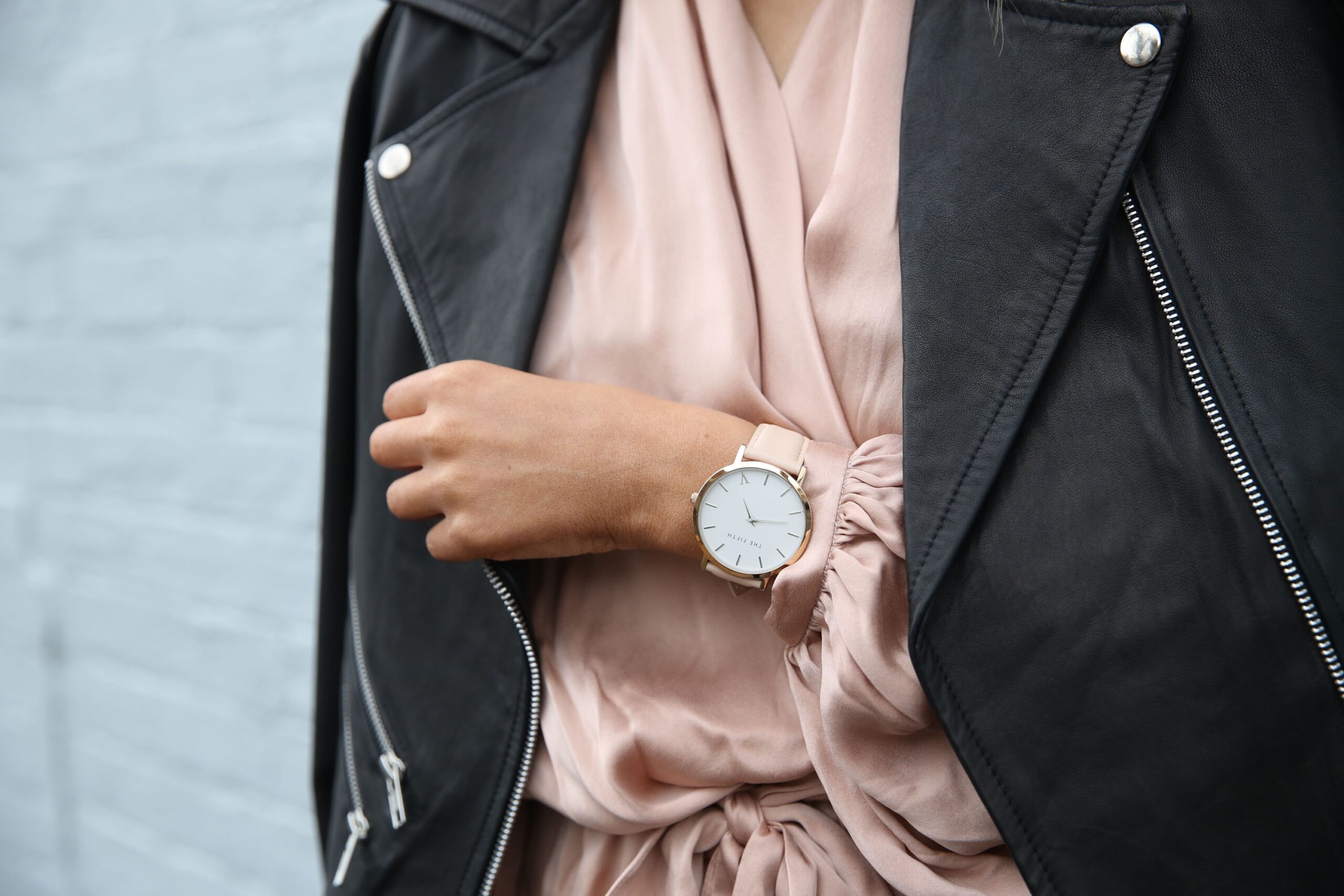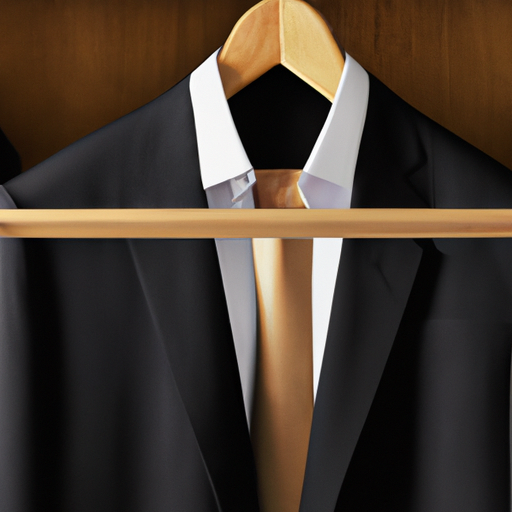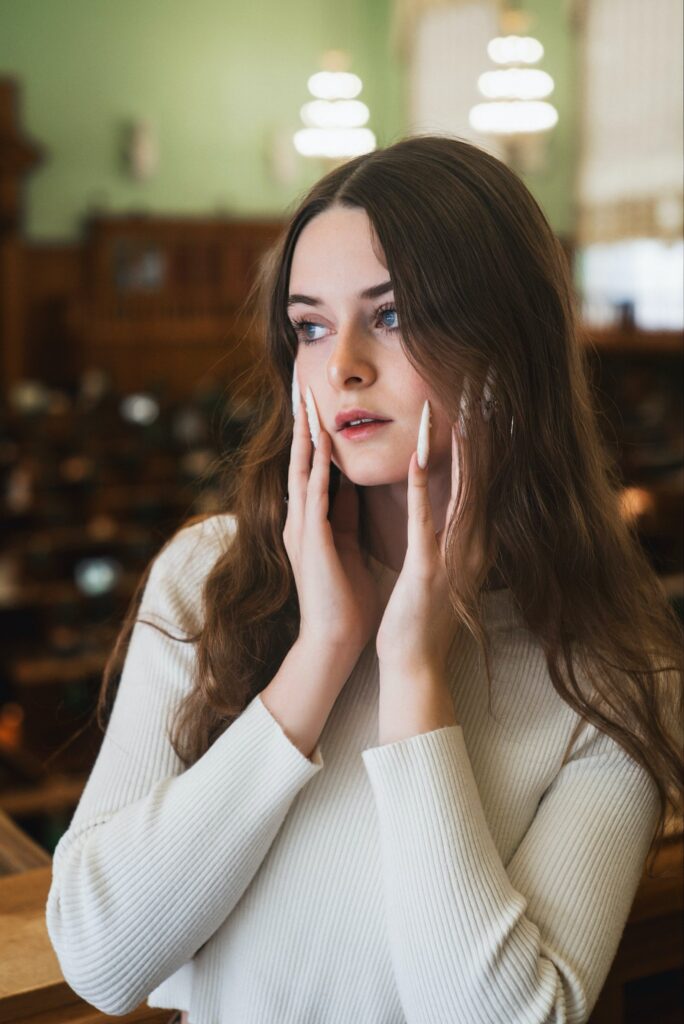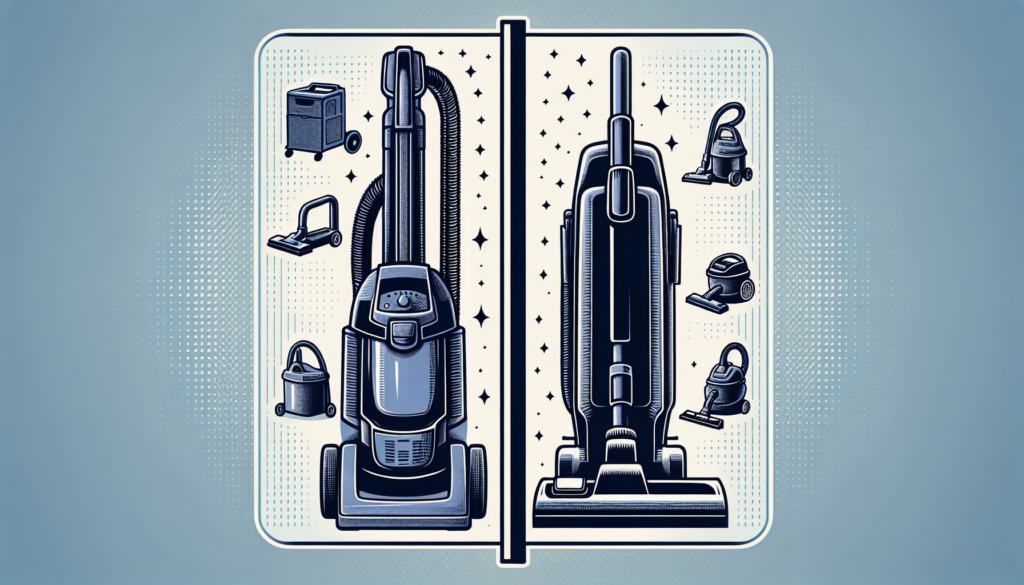Looking to upgrade your wardrobe? Look no further! Get ready for a comprehensive guide that will help you navigate the world of men’s clothing like a pro. From finding the perfect fit to staying on top of the latest fashion trends, this guide has got you covered. So whether you’re shopping for a special occasion or simply want to refresh your everyday look, get ready to make confident purchase decisions with the expert insights and tips provided here. Get ready to elevate your style game to new heights!

Understanding Men’s Clothing Types
Shirts
Shirts are a staple in every man’s wardrobe. They come in various styles, including button-down shirts, polo shirts, and dress shirts. Button-down shirts are versatile and can be worn casually or dressed up for more formal occasions. Polo shirts are perfect for a smart-casual look, and dress shirts are ideal for professional settings or special events.
T-Shirts
T-shirts are the ultimate casual clothing item. They are comfortable, easy to wear, and come in a wide range of colors and designs. T-shirts can be worn on their own or layered under shirts or jackets. They are a must-have for any man looking for a laid-back and effortless style.
Pants
Pants are a wardrobe essential for men. They offer comfort and style for various occasions. From classic chinos to tailored trousers, there is a wide variety to choose from. Pants can be paired with shirts, t-shirts, or sweaters to create different looks, whether it’s for work or a casual outing.
Jeans
Jeans are a timeless and versatile clothing item. They come in different cuts and styles, including slim fit, straight leg, and bootcut. Jeans can be dressed up with a blazer for a more polished look or paired with a t-shirt for a casual vibe. They are a go-to option for men of all ages and styles.
Shorts
Shorts are perfect for warmer weather or casual occasions. They come in different lengths, from above the knee to mid-thigh. Shorts can be paired with a t-shirt or polo shirt for a relaxed and comfortable look. They are essential for outdoor activities and beach outings.
Suits
Suits are the epitome of elegance and sophistication. They consist of matching trousers and a jacket, often accompanied by a dress shirt and tie. Suits are worn for formal events, weddings, or professional settings. Investing in a well-fitted suit is a wise choice for any man who wants to make a lasting impression.
Jackets
Jackets are versatile outerwear options that can complement any outfit. From leather jackets to bomber jackets, there are various styles to choose from. Jackets not only provide warmth but also add a stylish touch to any look. They can be layered over shirts or sweaters for a fashionable and practical ensemble.
Sweaters
Sweaters are excellent for providing warmth and comfort. They come in different materials, such as wool or cotton, and various styles, including crew neck and V-neck. Sweaters can be worn on their own or layered over shirts for a polished and sophisticated look. They are perfect for the colder months or chilly evenings.
Hoodies
Hoodies are a popular choice for a relaxed and sporty look. They have a hood and often feature a front pocket. Hoodies are perfect for casual outings or lounging at home. They can be paired with jeans or joggers for a comfortable yet stylish outfit.
Underwear
Underwear is an essential part of men’s clothing. From boxers to briefs to boxer briefs, there are many options available. Comfort, fit, and material are important considerations when choosing underwear. It is recommended to invest in high-quality underwear for ultimate comfort and support.
Determining the Right Size
Understanding Measurements
Understanding your measurements is crucial when buying men’s clothing. Measure your chest, waist, hips, and inseam to ensure a proper fit. Consult size charts provided by brands to find the right size based on your measurements. Remember, different brands may have slightly different sizing, so it’s essential to refer to specific size guides.
Trying Different Sizes
It’s always a good idea to try different sizes when shopping for clothes. The fit can vary depending on the brand and style, so don’t be afraid to experiment. Trying on different sizes allows you to find the most comfortable and flattering fit for your body shape.
Considerations for Different Clothing Items
Different clothing items may have specific considerations when it comes to sizing. For example, shirts should have a comfortable fit around the chest and shoulders, with enough room for movement. Pants should fit well around the waist and hips, without being too tight or too loose. Jeans may fit differently, depending on the style (e.g., slim-fit vs. relaxed fit). Consider the intended use and desired style when determining the right size for each clothing item.

Choosing the Right Fabric
Cotton
Cotton is a popular fabric choice for men’s clothing due to its breathability and comfort. It is soft and lightweight, making it suitable for various seasons. Cotton shirts, t-shirts, and pants are versatile and can be worn in both casual and formal settings. However, cotton may wrinkle easily and may not provide as much warmth in colder weather.
Linen
Linen is a lightweight and breathable fabric that is perfect for hot weather. It has a natural texture and is known for its ability to keep you cool. Linen shirts and pants are ideal for summer or tropical climates. However, linen may wrinkle easily and may require more maintenance compared to other fabrics.
Wool
Wool is a warm and insulating fabric that is perfect for colder weather. It is known for its softness, durability, and ability to regulate body temperature. Wool sweaters, jackets, and suits are classic and timeless options. However, wool may require special care when it comes to cleaning and may not be suitable for warmer seasons.
Polyester
Polyester is a synthetic fabric that is known for its durability and wrinkle resistance. It is lightweight, quick-drying, and easy to care for. Polyester is commonly used in activewear, such as athletic shorts or performance t-shirts. However, some people may find polyester less breathable compared to natural fabrics.
Blends
Blended fabrics combine different materials to achieve specific properties. For example, cotton-polyester blends offer the comfort of cotton with the durability of polyester. Blends can provide the best of both worlds in terms of moisture-wicking, breathability, and wrinkle resistance. Consider the blend ratio and desired characteristics when choosing clothing items made from blended fabrics.
Considerations for Different Seasons
When choosing fabrics, consider the season and weather conditions. Lightweight and breathable fabrics like cotton and linen are excellent for warmer seasons, while wool and heavier blends provide warmth during colder months. Pay attention to fabric thickness and insulation properties to ensure comfort and suitability for the desired season.
Understanding Men’s Clothing Styles
Casual
Casual clothing is perfect for everyday wear and relaxed settings. It includes t-shirts, jeans, shorts, and comfortable shoes. Casual style allows for personal expression and creativity while maintaining comfort and a laid-back vibe. Casual clothing is ideal for running errands, hanging out with friends, or casual outings.
Formal
Formal clothing is reserved for special occasions and dressier events. It includes suits, dress shirts, ties, and dress shoes. Formal style requires attention to detail, such as proper fit and coordination of colors. Formal clothing exudes sophistication and elegance, making it suitable for weddings, gala events, or business formal settings.
Business Casual
Business casual is a more relaxed version of formal attire. It strikes a balance between professionalism and comfort. It includes dress pants or chinos, button-down shirts, and loafers or dress shoes. Business casual style is suitable for work environments that don’t require strict formal attire. It allows for more individuality and style while maintaining a polished appearance.
Athleisure
Athleisure combines athletic and leisurewear, creating a comfortable and stylish look. It includes activewear, such as joggers, hoodies, sneakers, and sporty accessories. Athleisure style is perfect for the gym, running errands, or casual outings. It embraces a sporty and active lifestyle while maintaining a cool and fashionable appearance.
Streetwear
Streetwear is influenced by urban culture and fashion. It includes casual clothing items with bold designs, graphic prints, and oversized fits. Streetwear often incorporates elements from hip-hop, skateboarding, and graffiti art. It is popular among the younger generation and those who want to make a fashion statement.
Vintage
Vintage style refers to clothing inspired by past eras, such as the 1920s to the 1990s. It includes retro shirts, pants, suits, and accessories that evoke a sense of nostalgia. Vintage style is characterized by unique patterns, vintage logos, and classic silhouettes. It is a great option for those who appreciate timeless designs and want to stand out from the crowd.
Bohemian
Bohemian style is known for its free-spirited and eclectic aesthetic. It includes loose-fitting shirts, flowing pants, and earthy colors. Bohemian fashion often incorporates natural fabrics, such as linen or cotton, and features ethnic-inspired prints and patterns. Bohemian style is perfect for those who prefer a laid-back and artistic vibe.
Preppy
Preppy style is associated with a classic and polished look. It includes tailored clothing items, such as blazers, chinos, and collared shirts. Preppy fashion often incorporates traditional patterns, such as stripes or plaid, and features clean lines and refined silhouettes. Preppy style is timeless and suitable for both casual and semi-formal occasions.
Minimalist
Minimalist style focuses on simplicity and clean lines. It embraces a minimalist lifestyle by choosing high-quality and versatile clothing items. Minimalist fashion often consists of neutral colors, simple designs, and timeless pieces. It is perfect for those who prefer a streamlined and sophisticated look.
Rocker
Rocker style is edgy and rebellious, often influenced by rock music and subcultures. It includes clothing items such as leather jackets, band t-shirts, distressed jeans, and boots. Rocker fashion often features bold prints, studs, and metallic accents. It is a great choice for those who want to make a bold fashion statement and embrace their rocker side.

Consider the Occasion
Work
When dressing for work, consider the dress code and professional environment. If the dress code is formal, opt for tailored suits, dress shirts, and dress shoes. For a business casual setting, choose dress pants or chinos, button-down shirts, and loafers. It’s essential to present yourself professionally while also incorporating personal style.
Weddings
Weddings require appropriate attire based on the dress code stated on the invitation. For formal weddings, opt for a well-fitted suit, dress shirt, tie, and dress shoes. Semi-formal weddings may allow for more flexibility, such as dress pants, blazer, and a button-down shirt. Casual weddings may permit dress pants, a button-down shirt, and dress shoes or loafers. Be sure to adhere to the dress code and consider the tone of the wedding when choosing your outfit.
Parties
Parties offer more flexibility in terms of style and attire. Casual parties or house gatherings may allow for comfortable yet stylish outfits, such as jeans, t-shirts, and sneakers. Dressier parties or night events may call for dress pants or chinos, a button-down shirt, and dress shoes. Consider the theme and location of the party to determine the appropriate clothing choices.
Casual Outings
Casual outings, such as lunch dates or shopping trips, allow for a relaxed and effortless style. Choose comfortable clothing items, such as jeans, t-shirts, and sneakers. Layer with a light jacket or hoodie for added style and versatility. Casual outings are an opportunity to showcase your personal style while ensuring comfort for the occasion.
Special Events
Special events, such as galas or charity balls, often have a formal dress code. It’s important to adhere to the event’s theme and dress appropriately. Tailored suits, dress shirts, ties, and dress shoes are usually expected. Pay attention to the details, such as matching accessories and coordinated colors, to achieve a sophisticated and polished look.
Outdoor Activities
Outdoor activities require clothing that is suitable for the specific activity and weather conditions. For hiking or camping, opt for moisture-wicking and breathable materials, such as activewear or outdoor-specific clothing. For outdoor sports, choose appropriate athletic attire that allows for movement and flexibility. Consider the weather, terrain, and activity level when choosing clothing for outdoor activities.
Sports Events
Sports events offer an opportunity to showcase team spirit while being comfortable. Show support for your favorite team by wearing their colors or official merchandise. Choose clothing items that allow for ease of movement, such as t-shirts, jerseys, and athletic shorts. Don’t forget to wear appropriate footwear for the event.
Gym/Fitness
When going to the gym or engaging in fitness activities, comfort and functionality are key. Choose moisture-wicking and breathable fabrics that allow for ease of movement. Activewear, such as joggers, t-shirts, and training shoes, are ideal for the gym. Consider the specific type of workout and choose clothing items accordingly.
Travel
Traveling requires comfortable clothing that allows for ease of movement and adaptability to different weather conditions. Choose versatile clothing items, such as jeans, t-shirts, and light jackets. Layering is essential to accommodate changes in temperature. Opt for comfortable shoes that are suitable for walking or exploring. Consider the duration and purpose of your travel when choosing clothing for your trip.
Building a Versatile Wardrobe
Essential Basics
Every man’s wardrobe should include essential basics that can be mixed and matched with other clothing items. These basics include neutral-colored t-shirts, jeans or chinos, a white dress shirt, a versatile blazer, and a pair of dress shoes. These pieces can form the foundation of various outfits and can be dressed up or down depending on the occasion.
Investment Pieces
Investment pieces are high-quality clothing items that are worth the extra cost due to their durability and timeless style. These pieces often include well-fitted suits, leather jackets, tailored dress shirts, and quality shoes. Investing in these items ensures longevity and versatility in your wardrobe. It’s important to choose investment pieces based on your personal style and lifestyle.
Versatile Colors
Choosing versatile colors allows for more flexibility and ease in mixing and matching different clothing items. Neutral colors, such as black, white, navy, and shades of gray, are classic and timeless. They can be paired with almost any color or pattern and are suitable for various occasions. Having a few pops of color or patterns can add interest and personality to your wardrobe.
Mixing and Matching
Mixing and matching clothing items allows for a wide range of outfit options with a limited number of pieces. Pairing different shirts, pants, and jackets can create unique and stylish looks. Experiment with different combinations to discover your own personal style and to maximize the use of your wardrobe. Accessories, such as belts, ties, and pocket squares, can also enhance the versatility of your outfits.
Adapting to Different Styles
A versatile wardrobe allows for easy adaptation to different styles. By incorporating different clothing items and accessories, you can transition from casual to formal or from sporty to sophisticated. Adding a blazer to a t-shirt and jeans instantly elevates the look, while swapping sneakers for dress shoes creates a more elegant appearance. Adaptability is key to ensuring you’re always dressed appropriately for any occasion.
Understanding Quality and Durability
Fabric Quality
Fabric quality plays a significant role in the durability and overall look of clothing items. Look for fabrics that are well-made and have a good reputation for lasting wear. Natural materials, such as high-quality cotton or wool, often provide better durability and comfort compared to synthetic fabrics. Consider the thickness, texture, and overall feel of the fabric when assessing its quality.
Construction and Stitching
The construction and stitching of a garment are essential factors in determining its durability. Pay attention to the seams and stitching to ensure they are even, tight, and secure. Check for any loose threads or weak points in the construction. Well-constructed clothing items will withstand wear and tear and maintain their shape over time.
Brand Reputation
Brand reputation can be a indicator of quality and durability. Research different brands and read customer reviews to assess their reputation. Brands that have been in the industry for a long time and have a good track record of producing high-quality clothing items are often a reliable choice. However, it’s important to remember that brand reputation alone should not be the sole factor in determining quality.
Customer Reviews
Customer reviews offer valuable insights into the quality and durability of clothing items. Read reviews from verified customers to get an idea of the product’s performance, fit, and overall satisfaction. Look for reviews that specifically mention the fabric quality, construction, and longevity of the item. Customer feedback provides real-life experiences and can help guide your purchasing decisions.
Warranty and Return Policies
Checking the warranty and return policies of brands or retailers is important when considering quality and durability. A reputable brand often stands behind its products and offers fair return policies or warranties. This ensures that you can seek a replacement or refund if there are any defects or issues with the clothing item. It’s always wise to familiarize yourself with these policies before making a purchase.
Considering Personal Style and Body Shape
Identifying Personal Style
Identifying your personal style is crucial when buying men’s clothing. Consider your preferences, lifestyle, and the image you want to project. Are you more of a casual and laid-back dresser, or do you prefer a more polished and refined look? Do you gravitate towards certain colors or patterns? Understanding your personal style will guide you in choosing clothing items that align with your individuality.
Flattering Your Body Shape
Flattering your body shape involves choosing clothing items that enhance your best features and create a balanced silhouette. Different body shapes have different considerations when it comes to fit and style. For example, if you have a slim build, fitted clothing can create a more tailored look. If you have a broader build, looser-fitting clothing can provide a more balanced appearance. Experiment with different cuts and styles to find what flatters your body shape best.
Highlighting Your Best Features
Highlighting your best features involves drawing attention to your strengths through the choice of clothing and styling. For example, if you have a well-defined jawline, opt for shirts with a structured collar that frames your face. If you have toned arms, choose shirts or t-shirts that showcase your muscles. By highlighting your best features, you can enhance your overall appearance and boost your confidence.
Budgeting for Men’s Clothing
Determining Your Budget
Determining your budget is an important step before buying men’s clothing. Consider your personal financial situation and how much you are willing to invest in building your wardrobe. Set a budget that allows you to balance affordability with quality and versatility. It’s important to remember that a higher price doesn’t always guarantee better quality, so do thorough research before making any purchases.
Comparing Prices
Comparing prices across different brands and retailers helps ensure that you are getting the best value for your money. Keep in mind that while affordability is important, quality and durability should also be considered. Look for sales, discounts, or promotions that can help you save money on your clothing purchases. Be sure to consider the overall value and longevity of the clothing item when comparing prices.
Sales and Discounts
Sales and discounts are great opportunities to buy men’s clothing at a lower price. Keep an eye out for seasonal sales, holiday promotions, or clearance events. Sign up for newsletters or follow brands or retailers on social media to stay updated on upcoming sales. However, be cautious of impulse purchases and always assess the quality and suitability of the item, even if it is on sale.
Quality vs. Price
When budgeting for men’s clothing, it’s important to strike a balance between quality and price. While higher-priced items may offer better quality and longevity, there are also affordable options that provide decent quality. Consider your specific needs, desired longevity of the item, and your personal budget when assessing the value and deciding how much to spend on each clothing item.
Where to Buy Men’s Clothing
Physical Retail Stores
Physical retail stores offer the advantage of trying on clothing items before making a purchase. These stores often have a wide selection of brands, styles, and sizes. Sales associates are available to provide assistance and advice. Popular options include department stores, specialty shops, and boutiques. Visit different stores in your area to explore the available options and find the right fit and style for you.
Online Retailers
Online retailers provide convenience and access to a wide range of clothing options from the comfort of your own home. Many brands and retailers have online stores where you can browse and purchase clothing items. Online shopping allows you to compare prices, read customer reviews, and access a variety of styles and sizes. However, it’s important to carefully check size charts, return policies, and read customer reviews to ensure a smooth online shopping experience.
Second-hand/Thrift Stores
Second-hand and thrift stores offer budget-friendly options for men’s clothing. These stores often have a variety of styles and unique finds. Shopping second-hand allows for sustainable fashion choices and the opportunity to discover vintage or retro pieces. It’s important to carefully inspect the clothing items for any damage or wear before purchasing. With a bit of patience and persistence, you can find hidden gems at a fraction of the original price.
Boutiques and Specialty Shops
Boutiques and specialty shops provide a curated selection of clothing items that cater to specific styles or aesthetics. These stores often focus on unique designs, quality craftsmanship, and personalized customer service. Shopping at boutiques and specialty shops allows for a more intimate shopping experience and the chance to discover niche brands or emerging designers.
Department Stores
Department stores offer a wide range of clothing options, from affordable to high-end brands. They often have multiple departments dedicated to men’s clothing, providing a one-stop shopping experience. Department stores often run sales and promotions, making it possible to find quality clothing at discounted prices. Explore different sections within the department store to discover brands, styles, and sizes that suit your preferences.
In conclusion, buying men’s clothing involves understanding the different types of clothing, determining the right size and fit, choosing the appropriate fabric for different occasions and seasons, considering personal style and body shape, budgeting wisely, and knowing where to find the best places to shop. By following these guidelines and taking the time to make informed decisions, you can build a versatile wardrobe that reflects your personal style and meets your clothing needs. Remember to prioritize quality, comfort, and durability, as these factors contribute to a satisfying and long-lasting shopping experience.




